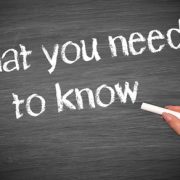Little-Known Facts About the Self-Directed IRA
The Self-Directed IRA is a powerful retirement tool.
We say this not to boast about the power of a Self-Directed IRA, but to point out an even more astounding fact: there are a surprising amount of people – even people who are on top of their retirement investments – who do not know about all of the benefits of this type of IRA. In fact, so few people kn ow about these types of IRAs that they ask questions like “is this legitimate?”
ow about these types of IRAs that they ask questions like “is this legitimate?”
Well, yes, it’s certainly legitimate – and what’s more, a Self-Directed IRA can be one of the best ways for you to invest in your future in a number of different ways. That’s why we’ve put together this brief article to announce some of the little-known facts about Self-Directed IRAs, many of which help illustrate just how valuable these can be.
Fact #1: Only some 5% of investors hold retirement accounts in nontraditional assets. There are some 46+ million retirement accounts out there, and a surprisingly small amount of them are held in the nontraditional assets that you often see us address here at AmericanIRA.com. Why is that interesting? Well, in a world of investing that stresses having a well-diversified portfolio, you would think that more people would look to nontraditional assets to spread their retirement wings, so to speak.
That number may be on the upswing, however. After many people saw just how volatile stocks can be back in ’08 and ’09, many are looking to protect their retirement nest egg from these fluctuations. This doesn’t mean we recommend abandoning the stock market, but that it can be a good idea to spread the wealth around.
Fact #2: It’s easy to convert to a Self-Directed IRA. If you have a pre-existing retirement account, such as a 401(k) account with a former employer, then you’ll actually find that it’s quite easy to switch over to a Self-Directed retirement account. You’ll have to get in touch with the previous employer to make sure that you have a hold on any outstanding procedures that need to take place; and, of course, you’ll have to know where you want your money to go. But once you have a handle on these basic ideas, you’ll find that the process of converting is easy, and will have minimal interruption with the account itself.
Fact #3: It’s perfectly allowable to invest in nontraditional assets, unless specifically prohibited. The IRS states which investments are not allowed in a retirement fund, not which ones are allowed. This is part of what offers the Self-Directed IRA its flexibility: it’s perfectly allowable within regulations to invest in a wide range of nontraditional investments. And since many of these nontraditional investments can help protect you from swings in the stock market, you’ll find that this isn’t only allowable, but sometimes is ideal for creating a well-diversified portfolio.
[tweetthis twitter_handles=”@iraexpert” hidden_hashtags=”#SelfDirectedIRA”]We’ve put together this brief article to announce some of the little-known facts about Self-Directed IRAs…[/tweetthis]
Fact #4: You can start withdrawing without penalties from a traditional IRA is typically at the age of 59 and a half. If you have a traditional IRA and are 59 and a half, you can start taking normal distributions from this account. This will require a Distribution Request form, of course – but you’ll find that it’s easier to take normal distributions from a Self-Directed IRA than you might have thought. This helps you realize that you can be feel perfectly secure that when you reach retirement age, your money will be there.
Call us at 1-866-7500-IRA(472) if you’re interested in learning more about Self-Directed IRAs – your can check out our Frequently Asked Questions as well. With more and more people taking advantage of Self-Directed IRAs, now’s the time to learn.
Image by: presentermedia.com





